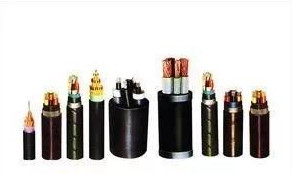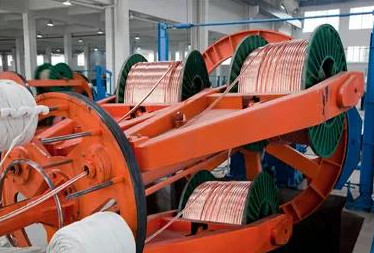Definition of filling coefficient on AAAC Cable Manual: ratio of actual cross-sectional area of conductor to cross-sectional area of core outline
Filling coefficient of circular core = sum of cross-sectional area of each single line / circumcircle area of stranded core
Fan, pad core filling factor = sum of each single line cross-sectional area / outline area of stranded core (i.e. roller hole section)
Understanding: both parameters guide the parameters after the body is processed. Do not understand as the parameters before machining

According to the definition, because the definition is the ratio of the actual cross-sectional area of the conductor to the sectional area of the outline, if the conductor is drawn, it shall be the cross-sectional area after stretching, rather than the cross-section before processing. Therefore, if the parameters of the conductor before processing are substituted for calculation, the total cross-sectional area shall be divided by the tensile coefficient as the effective cross-sectional area after the stretching
Because there are still some gaps between conductors even after the conductor is pressed tightly. In order to express the degree of tight pressure, the ratio of the conductor without clearance (i.e. the effective conductor cross-section after tight compression) to the cross-sectional area with clearance of conductor is used to indicate the degree of tightness. Therefore, it can be understood that the effective section of the whole conductor is filled into the profile section, and the percentage of effective section filled with effective section, The larger the filling coefficient is, the greater the ratio of the actual effective section to the profile section after machining, the closer it is, and the looser the other is
After the circular core is pressed tightly, the outer circle area is the outline area of the core. For the sector and tile core, the contour area is difficult to calculate. Generally, the contour area of the core after pressing is not considered after the roller is drawn (that is, the contour cross-section area of the roller is the same as the actual contour sectional area of the conductor), the cross-section area of the roller hole is the contour area of the core
For the concept of the coefficient of tension, this is to facilitate understanding. Generally, the filling coefficient of conductor is also called the compression coefficient, which is equivalent to the common name. In the case of not really understanding the meaning of the coefficient of tension, it is very easy to think that since it is a compression coefficient, the lower the value, the tighter the pressure, This should be a false understanding. That is, the direct and direct view of the compression coefficient is the ratio of the effective cross-section after compression to the effective cross-sectional area before the compression or the ratio of the profile section (or conductor outer diameter) to the profile section (or outer diameter of conductor) before the compression. Both of these two understandings are incorrect. The former can only reflect the degree of tension of the conductor and cannot reflect the degree of compression, The latter can not reflect the degree of tension accurately. Imagine that if the conductor is pressed to zero gap under ideal condition and the tension is still under the action of external force after compression, the ratio of the compressed contour area to the contour area before compression will be a value that changes with the tensile strength. This can not reflect the degree of compression. According to the definition of filling coefficient, As long as the actual section after compression is the same as the profile section, the compression coefficient is 1, i.e. zero clearance. No matter how stretched, it is always the same filling coefficient
In some places, we often see some statements, such as the coefficient of compression is generally 0.89-0.92, and it is impossible to reach 0.85. This is unreasonable. It should be said that the compression coefficient is generally 0.89-0.92, and it cannot reach 0.98. Because the compression coefficient of 0.85 is very loose, rather than pressed very tightly. The compression coefficient of one compression is relatively small, and the layered compression is larger

The extension coefficient is defined as the ratio of the effective cross-sectional area before the conductor is stretched to the effective cross-sectional area after the conductor is stretched. Generally, the higher the degree of conductor compression, the greater the external force is required, so the greater the tensile strength is, The larger the extension coefficient is, the effective section before the conductor is the sum of the cross-sectional area of all single conductor before stretching. The effective section after stretching shall be the filling coefficient of conductor contour area X. the contour area of roller hole is the outline area after the conductor stretching without considering the post rolling tension. Therefore:
The elongation coefficient of the conductor = the effective area of the conductor before stretching / the contour area of the roller hole * filling factor
In this formula, it is not understood that the larger the filling coefficient, the smaller the extension coefficient is, because when the filling coefficient is larger, the smaller the contour area of the roller hole is, the product of the (contour area of the roller hole * filling coefficient) is still smaller than that of the small filling coefficient. Under the change of two variables, the smaller the filling coefficient, the smaller the tensile coefficient, the larger the filling coefficient, The greater the extension coefficient
For the measurement of extension coefficient, the standard length, such as 1 m, can be taken for weighing after processing, and then the measured weight value of unit length of conductor before processing / unit length after processing can be taken as the extension coefficient
For more information on cables, click Joy ’cable Blog
